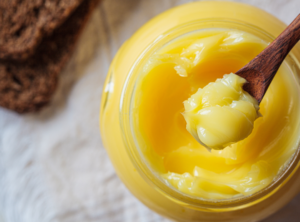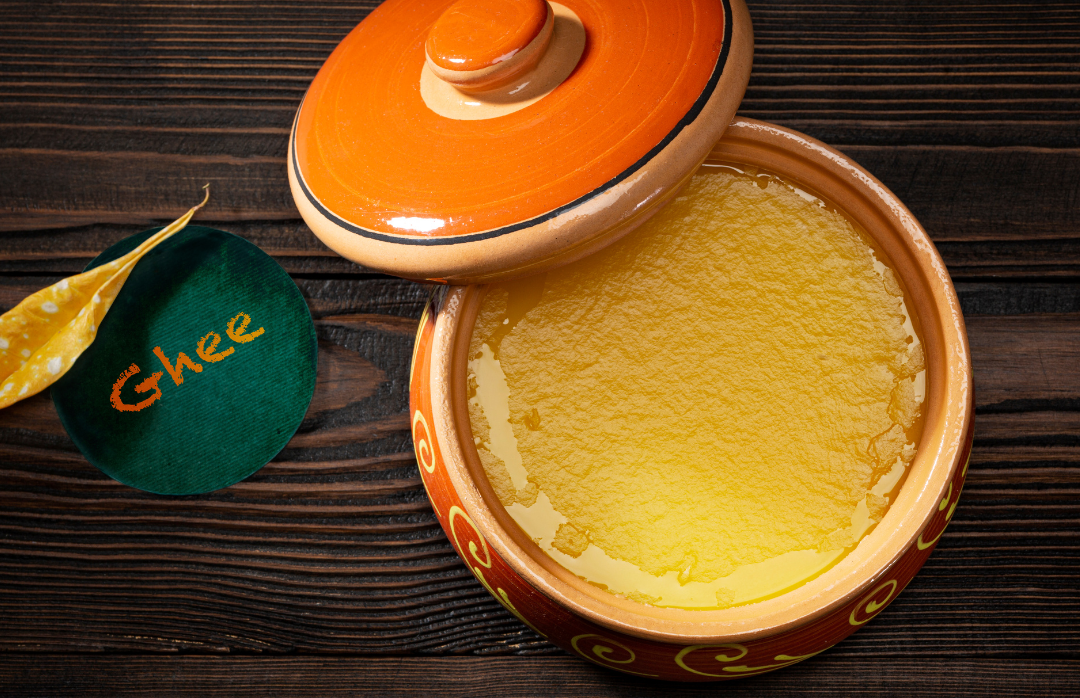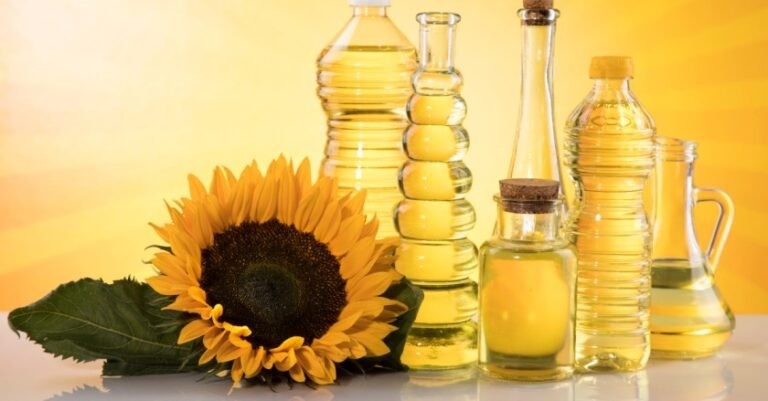Ghee: Is it good or bad?
As we know ghee was widely used in cooking for generations but the usage of ghee has drastically declined. So the question here is, Is ghee good or bad for health? Can we bring back our tradition of using ghee in large quantities?
To figure this out, let’s first understand why ghee is a superfood.
Ghee’s Fatty Acid Composition:
- Ghee’s fatty acid composition is categorized based on chain length and degree of unsaturation.
- Chain-length fatty acids are SCFA (Short Chain Fatty Acids), MCFA (Medium Chain Fatty Acids), and LCFA (Long Chain Fatty Acids).
- Degree of unsaturation results in SFA (Saturated Fatty Acids), MUFA (Mono-unsaturated Fatty Acids), and PUFA (Poly-unsaturated Fatty Acids).
- Sub-categorization includes the position of the double bond from the end of the hydrophobic chain, the conjugation of fatty acids, and phospholipids.
- These fatty acids play important roles in the body, including anti-inflammatory and antioxidant action, and brain health.
- Studies have shown that dietary intake of SCFAs and lipids like MUFAs, PUFAs, and phytosterols have significant therapeutic properties.
- Consuming these fatty acids and lipids can suppress inflammation, Aβ production and deposition, hypercholesterolemia, and dyslipidemia.
- Some of these fatty acids and lipids play a crucial role in other cellular signaling pathways.
Ghee – Ayurveda perspective

- Different animal species produce different types of ghee.
- Cow, goat, and human ghee reduce all three doshas.
- Buffalo ghee increases pitta
- Ghee’s pharmacology varies, affecting health effects.
- Health benefits include cognitive health, gut health, nourishing benefits, vision and ear, nose and throat health, and cleansing and respiratory health.
- Ayurveda suggests ghee from different animal species can have various functional purposes.
- Cow ghee is highly praised for its nourishing properties and rejuvenation.
- Ayurvedic literature suggests ghee’s properties influence gastrointestinal health in the order of buffalo > goat > cow.
- Ghee is used in Ayurveda for various medical applications, including treatment protocols for various ailments.
- Ayurvedic ghee like Amrutprash, Arjuna Ghrita, Ashoka Ghrita, Ashwagandha Ghrita, Kaghrita, Kalyan Ghrita, and Vachadighrita offer numerous health benefits.
Cow Ghee’s Digestibility and Health Benefits
- Cow ghee is digested 96% more than other vegetable or animal source fats due to fat globule dispersion in milk’s aqueous phase.
- Milk fat is absorbed directly, unlike other dietary fats that need emulsification.
- Milk fat contains short and medium-chain fatty acids, which are easier to absorb than long-chain fatty acids.
- Short-chain fatty acids involving ester bonds are more easily cleaved by lipases.
- Ghee contains butyric acid, a short-chain fatty acid, which aids digestion and supports intestinal wall support.
- Studies show that people with unhealthy digestive tracts do not produce butyric acid, supporting the production of killer T cells in the gut and a strong immune system.
Health Benefits of Ghee
• Ghee is considered superior to other fats due to its presence of short-chain fatty acids, four fat-soluble vitamins, and essential fatty acids.
• It is considered a healthy fat due to its anti-diabetic, anticancer, antistress, eye lubricant, liver, cardioprotective, and wound healing properties.
Ghee’s Vitamin Content

- High in Vitamin A, D, and K.
- Excellent source of Vitamin E with antioxidant properties.
- Reduces cancer, arthritis, cataracts risk.
- Helps reduce heart disease risk.
Ghee’s Nutrient Absorption Benefits
- Rich source of vitamins, antioxidants, and healthy fats.
- Moderation is advised for fat consumption.
- Ghee aids in nutrient absorption in healthy cooking.
Ghee’s Anti-Inflammatory Effects
- Used in alternative ayurvedic medicine to treat burns and swelling.
- Containing butyrate, a fatty acid known for its anti-inflammatory properties.
Ghee’s Obesity-Combating Properties
- A significant source of conjugated linoleic acid (CLA), potentially aiding in weight loss and fat reduction.
Ghee’s Heart Health Benefits
- High concentration of monounsaturated omega-3s, supporting a healthy heart and blood vessels.
- A balanced diet can help reduce unhealthy cholesterol levels.
Ghee Benefits for Skin and Digestive Health
- Ghee aids in faster wound healing, skin strengthening, and collagen increase.
- It supports digestive health by containing butyrate, a beneficial fat for the colon.
- Ghee’s butyrate content is only about 1%, compared to the colon’s natural production.
- Consuming fiber-rich foods can increase short-chain fatty acid intake.
Ghee Risks and Dietary Guidelines
- Moderation is advised due to ghee’s high-fat content.
- Ghee can lower heart disease risk in moderation, but excessive saturated fat can increase the risk.
- People with other heart disease risk factors should be cautious when incorporating ghee into their diet.
- Ghee’s CLA may reduce weight gain, but excessive consumption can lead to weight gain and obesity.
REFERENCES:
- https://www.jnmhs.com/html-article/12521
- https://pubmed.ncbi.nlm.nih.gov/29369816/
- https://pubmed.ncbi.nlm.nih.gov/25441954/
- https://pubmed.ncbi.nlm.nih.gov/16924272/
- https://pubmed.ncbi.nlm.nih.gov/11024006/
- https://www.ncbi.nlm.nih.gov/pmc/articles/PMC3215354/
- https://www.ncbi.nlm.nih.gov/pmc/articles/PMC10789628/
- https://www.researchgate.net/publication/346457256_Health_benefits_of_ghee_clarified_butter_-_A_review_from_ayurvedic_perspective








